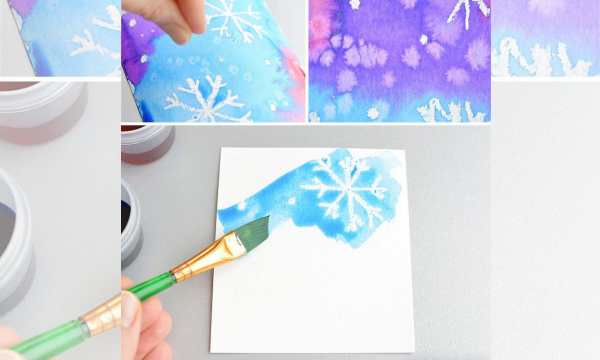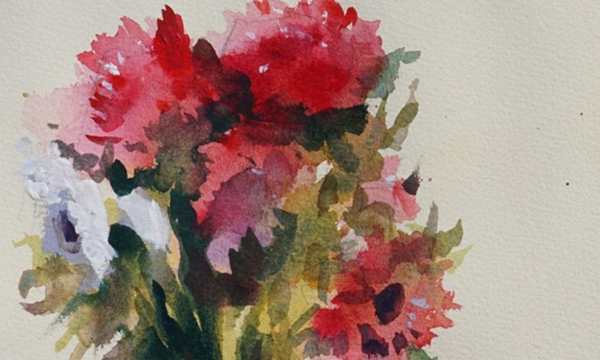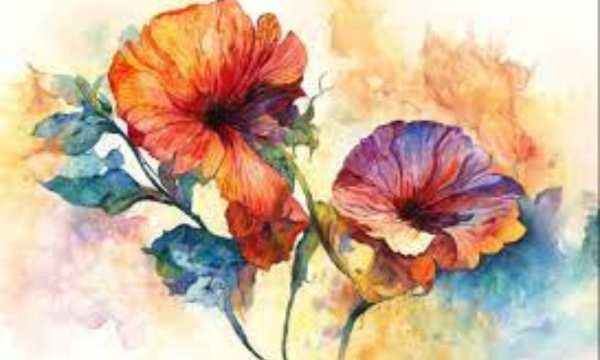Watercolor painting is a beautiful art form that allows artists to express their creativity through the way colors are mixed.
Ad
One of the most important skills of a watercolor artist is the ability to mix colors well. This guide describes how to mix colors in watercolor and reveals techniques to turn an ordinary canvas into a beautiful work of art.
1. Basic Knowledge
Before learning more advanced techniques, it’s important to understand the basics of color theory. All other colors are based on the primary colors, namely red, blue, and yellow. When you mix primary colors to create secondary colors, the color palette expands. An excellent set of primary colors opens up a world of possibilities for watercolor painting enthusiasts.
Ad
2. The Art of Gradation
An important part of being good at watercolor is being able to smooth color changes. Gradients are the art of blending two colors so that they transition smoothly from one to the other. Start by lightly washing the first color and then slowly add the second color, allowing it to blend naturally. This method adds depth and dimension to your art, creating truly stunning effects.
3. Accept the Color Temperature
When working with watercolors it is important to understand color temperature. Warm colors like red and yellow make you feel energetic and enthusiastic, while cool colors like blue and green make you feel calm. Artists can use warm and cold tones in a planned manner to add emotion and atmosphere to their paintings.
Ad
4. Experimenting with Complementary Colors
When you place two complementary colors on a color wheel, you get a lot of dynamic contrast. This method makes your watercolor paintings more vibrant and exciting. For example, mixing red and green or blue and orange can create a striking effect that catches people’s attention.
5. The Power of a Few Colors
It’s tempting to use different colors, but limiting your palette can help colors work better together in your art. Choosing a few key colors and trying different combinations can help you understand each color better. This focused approach allows the artist to create paintings that look harmonious.
6. The Magic of Watercolor Layers
Watercolor artists need to know how to mix colors and use layers to make their art look better. Layers give your paintings more depth and richness, and allow you to add fine detail and texture. Add lighter washes first and then slowly add more pigment. This creates a stunning effect that draws people to your art.
7. Make Optimal Use of Openness
Watercolor is unique because it is transparent, allowing artists to create effects that appear light and ethereal. Try experimenting with different water-pigment ratios to bring out this property. You can make paint transparent by adding water to the paint. This allows light to influence your composition. This method is particularly suitable for painting delicate things such as flowers, clouds, or reflections in water.
8. Unique Color Scheme
As you get better at watercolor painting, you may want to try colors that you don’t normally use together. Monochrome paintings, which use different shades of the same color, can look elegant and simple. Create a peaceful and harmonious atmosphere by using adjacent shades on the color wheel to create similar color schemes. If you want your art to be truly unique, don’t be afraid to try these creative methods.
9. Feelings of Brush Strokes
Adding feeling to your brushstrokes is an important part of taking your watercolor art to the next level. Think about the atmosphere you want to create and adjust your strokes accordingly. Soft, flowing brushstrokes can evoke tranquil landscapes, while strong, expressive marks can convey the intensity of a scene. When skill and emotion work together, they create a painting that is deeply moving.
10. Keep Your Audience Interested
As you get better at watercolor painting and color mixing, don’t forget the importance of connecting with your audience. Connect with other artists, talk about your creative process on social media sites, and join online art communities. Having a network of people who can help you grow will not only help you grow, but it will also allow you to exhibit and sell your art.
Conclusion
Mastering the art of mixing watercolor colors is a lifelong process. Every brushstroke on canvas brings you closer to making the most of this beautiful medium. From amateurs to professionals, everyone can enjoy watercolor painting. The fun comes from trying new colors and techniques and being as creative as your mind allows. So grab your brush, use your imagination, and embark on an artistic journey through the beautiful world of watercolor painting.
FAQs
1. What are the basic colors that can be used in watercolor painting?
Red, blue, and yellow are the main colors used in watercolor painting. These colors form the basis for all other colors.
2. Why is it important to use gradients in watercolor art?
Gradients, or a smooth blending of colors, add depth and dimension to watercolor art. It makes the changes between colors look smooth, improving the overall look of the painting.
3. What does color temperature mean when painting with watercolors?
When it comes to watercolor art, it is important to understand color temperature. Warm colors like red and yellow make you feel energetic, while cool colors like blue and green make you feel calm. If you play with these temperatures, you can add more feeling and atmosphere to your painting.
4. What does color matching mean in watercolor art?
When you place two complementary colors on a color wheel, you get a lot of dynamic contrast. When you use colors that are opposite to each other, you can achieve stunning effects, making your watercolor pieces more colorful and interesting.
5. Why do watercolors only have a few colors?
You’re more likely to achieve color harmony in your artwork if you limit the colors you use. By choosing a few key colors and trying them out together, you can better understand each color and create a painting that looks good together.
6. What role does layering play in watercolor art?
Layering is an important part of watercolor art because it gives the painting more depth and richness. Artists can create intricate details and textures by starting with lighter washes and slowly adding more paint.


